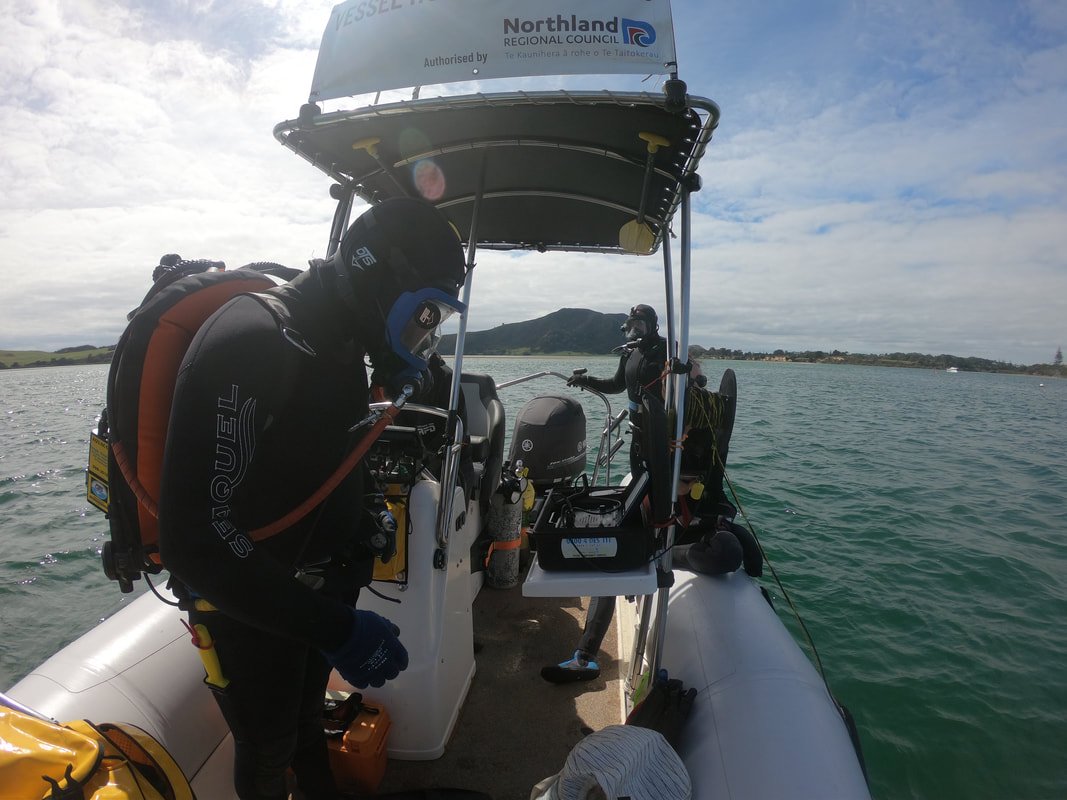It’s official: Tutukaka has eliminated fanworm
Five years after Mediterranean fanworm was last spotted at Tutukaka, the bay has officially been declared ‘fanworm free’. Eradication of a marine pest species, such as Mediterranean fanworm, can be difficult and depends on a number of factors, like how well established it has become before being detected and whether it can be easily and effectively removed without causing further spread, says Kathy Walls of Biosecurity New Zealand.
In 2015, the Bay of Plenty Regional Council Toi Moana dive team detected fanworm on the hull of a visiting boat whose movements were traced back to Auckland, via Tutukaka.
Northland Regional Council were notified, mobilised their surveillance, and found the early signs of a fanworm infestation at Tutukaka Marina.
If elimination efforts hadn’t been undertaken, the Sabella population would have increased significantly, with potentially damaging impacts to Poor Knights Islands and other high value areas.
Biosecurity New Zealand and Northland Regional Council were swift to develop a joint response that included a programme of dive surveillance, not only of boats and marina structures but also of the seabed once it was realised that fanworm larvae can attach to even the smallest of shells or pebbles.
Meanwhile, the management of Tutukaka Marina worked with Northland Regional Council and other marina operators in the region to develop the ‘6 in 1 rule’ – meaning that any boat arriving in a participating marina must have been antifouled in the last six months, or power-washed in the last month. Many boaties passionate about protecting the marine environment in Tutukaka have also changed their maintenance behaviours and ensured they do not carry marine pests aboard their boats.
There isn’t a one-size fits all approach to eradicating a marine pest when it has been detected. In the case of Mediterranean fanworm, careful removal from structures like piles and the underside of pontoons using divers has proven very effective. Where heavily infested vessels have been found, the best approach is to have the boat hauled out and the hull cleaned and antifouled.
With no sign of the species in the bay since 2017, it’s now considered to be eliminated. To help with confirmation of elimination, eDNA sampling and a snorkel survey has also not picked up any sign of fanworm.
Success factors for Tutukaka:
Detection was early and action was taken quickly.
Collaboration and good relationships. From the moment that the marine pest was detected in the Bay of Plenty, the councils and the marina management communicated and worked together to organise a fast response.
It was thorough. Diving has been conducted twice a year and was intensive. Dive surveillance is incredibly difficult, so the regularity is important.
The marina has been consistent about communicating about and applying the 6-in-1 rule – even though it’s challenging to tell boats that they can’t come in. Even customers who have left for more than thirty days must adhere to it.
Northland Regional Council taps into experienced, diligent dive teams who leave no stone unturned
Kathy says there are positive signs that Mediterranean fanworm has been eliminated from other locations too, like Tarakohe in Golden Bay. While the teams found large mature fanworms initially, none have been detected for two years.
Facts about Mediterranean fanworm:
The scientific name of Mediterranean fanworm is Sabella spallanzanii. It is a marine tubeworm where the animal lives inside its tube which is anchored to a hard surface, like the hull of a boat, a concrete pontoon, wooden pile, rock or shell. It extends a retractable fan outside the top of its tube to feed from the surrounding sea water.
This fanworm was first detected at Lyttelton Harbour in 2008, then at Auckland’s Viaduct Basin in 2009. Unfortunately, it spread to a number of other locations in the North and South Island and councils and Biosecurity New Zealand are working together to slow the spread and where feasible, eliminate it from places where it has been found subsequently.
Mediterranean fanworm is classified as an Unwanted Organism and a Notifiable Organism under the Biosecurity Act, 1991. If you think you’ve seen this fanworm in locations outside of Auckland or Whangarei Harbour, please call the MPI Pest and Diseases Hotline (0800 80 99 66) or by completing an online reporting form at: report.mpi.govt.nz

